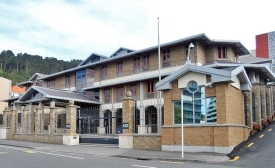maori

Yadira Ixchel Martínez Pantoja explains the public diplomacy impact of British High Commissioner Laura Clarke's activities in New Zealand.
The first major exhibition of Māori portraits in the United States opens tomorrow, Saturday 9 September, at the de Young Museum in San Francisco. [...] They are a snapshot in time and have huge significance for our cultural identity and heritage. Just as salient today, these portraits help define the modern society of Aotearoa New Zealand. Knowing that these portraits will again forge cross-cultural interactions is a remarkable accomplishment.’
DNA research suggests that Māori originated from Taiwan. This week Te Kāea reporter Talisa Kupenga embarks on an Asia New Zealand Foundation-sponsored cultural exchange to the Island nation some 180-kilometres East of China. The exchange aims to explore the indigenous links and the potential for greater economic ties between Taiwan and Aotearoa.
Six visiting Maori clay artists, as part of a 10-day cultural exchange organized through Clatsop Community College, have spent this week on the North Coast touring, meeting with local dignitaries, bonding with Chinookans and even trying to pique the interest of local high school students about their backgrounds and art.
New Zealand's Maori king has refused to meet the Duke and Duchess of Cambridge and their baby Prince George during a royal tour next month, saying a proposed 90-minute slot would not allow enough time for the meeting.
Political leaders in central and south America are looking to Maori as a way to enhance their own traditional communities. Federation of Maori Authorities' chair Traci Houpapa visited a number of countries in Latin America earlier this year with the prime minister. She was asked by leaders there why Maori have become so economically and strategically sophisticated, and how they can empower their first nations peoples.







